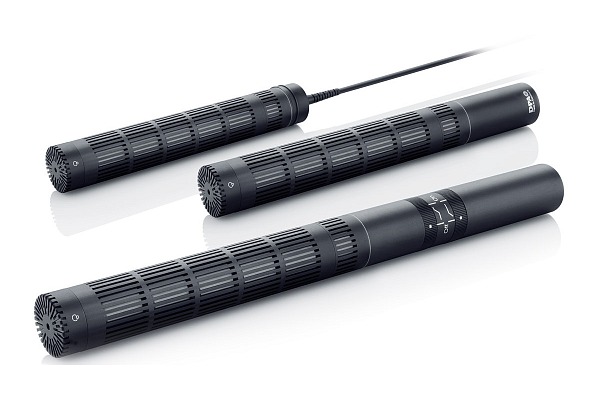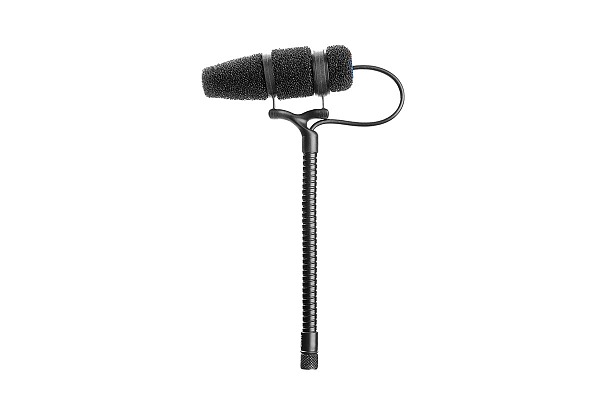DPA Microphones 2017
Shotgun Microphone
The most durable shotgun mic of all time
The 2017 Shotgun Microphone is an ultra-directional microphone that combines crystal-clear, authentic sound with stable, consistent performance in harsh conditions. Its acoustic performance sets it apart from the competition. It has efficient off-axis rejection combined with an off-axis frequency response that is much more linear than most similar shotgun microphones on the market. These are the capabilities that result in authentic sound. In addition, the 2017 performs consistently in a variety of conditions, such as cold weather, humid environments, and general harsh situations.
Finally, although the interference tube surrounding the capsule is quite long, the entire microphone is housed in a shorter, lighter body than many mics it outperforms. This makes the 2017 a practical choice in a wide range of applications.
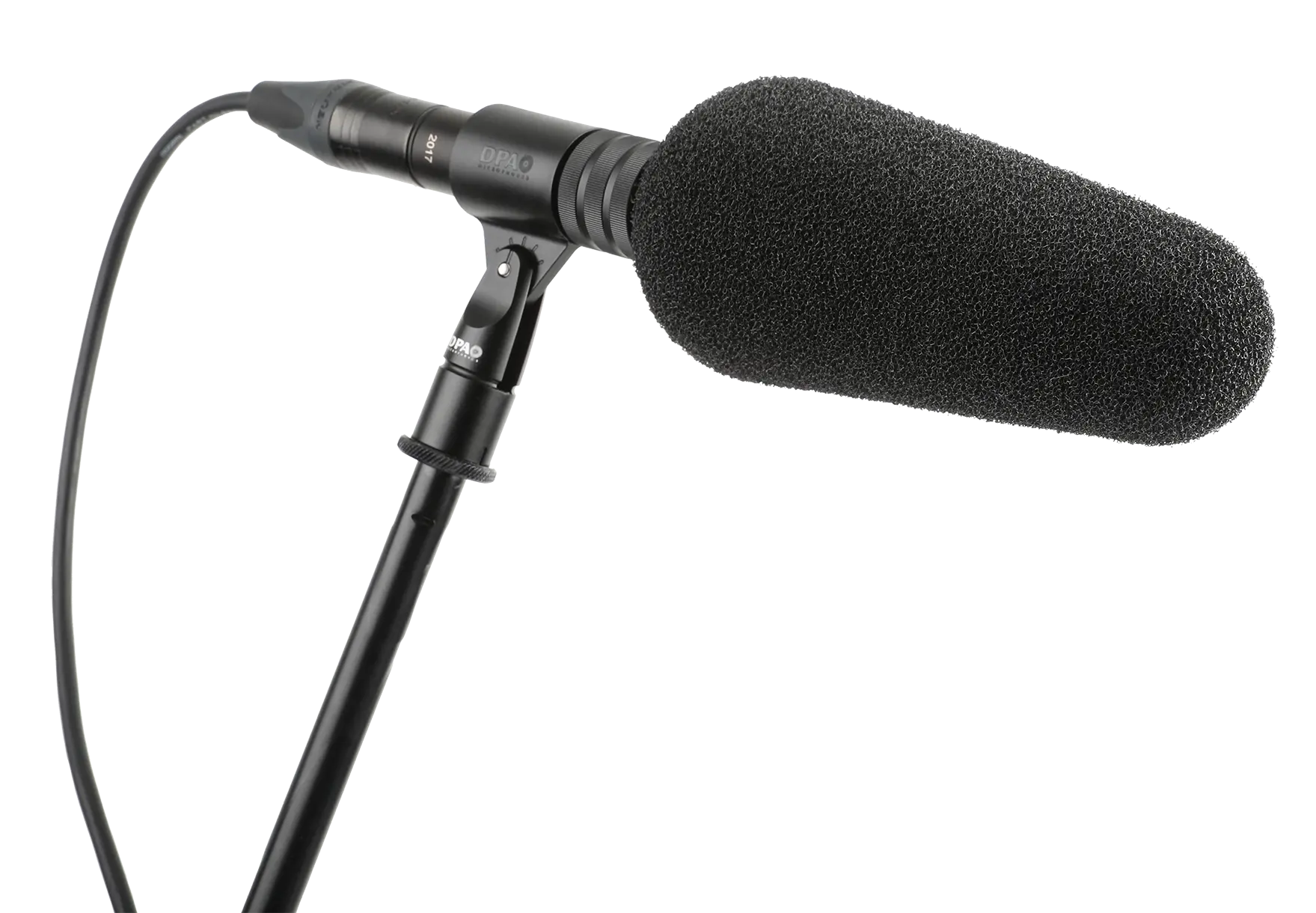
Precise, natural sound
2017 is designed to effortlessly blend the sound of the primary sound source with natural sound captured off-axis. The sound is clear and lifelike, including the highly attenuated off-axis input. It has the same uncolored off-axis response, meaning it sounds like what comes in on-axis, just attenuated accordingly with the side and rear inputs. Many other shotgun microphones don't pick up off-axis sound naturally, so crowd noise, for example, sounds more like a waterfall or even unrecognizable.
Exceptional durability
The 2017 is designed to withstand rough handling and challenging conditions such as cold climates and humidity.
DPA designed the encapsulation structure without moving mechanical parts, and found just the right material thickness and an ideal uniform pattern of slots on the grid. Together, these things make the microphone extremely resistant to mechanical shock. In addition, the materials used in the capsule design and electronics ensure that the microphone is resistant to moisture, temperature and condensation problems.
The 2017 has a thick, rugged body construction of brass, which is exceptionally durable and known for its resistance to corrosion and metal fatigue. In addition, the mic's surfaces are treated with a protective black chrome finish that provides a more graceful aging process.
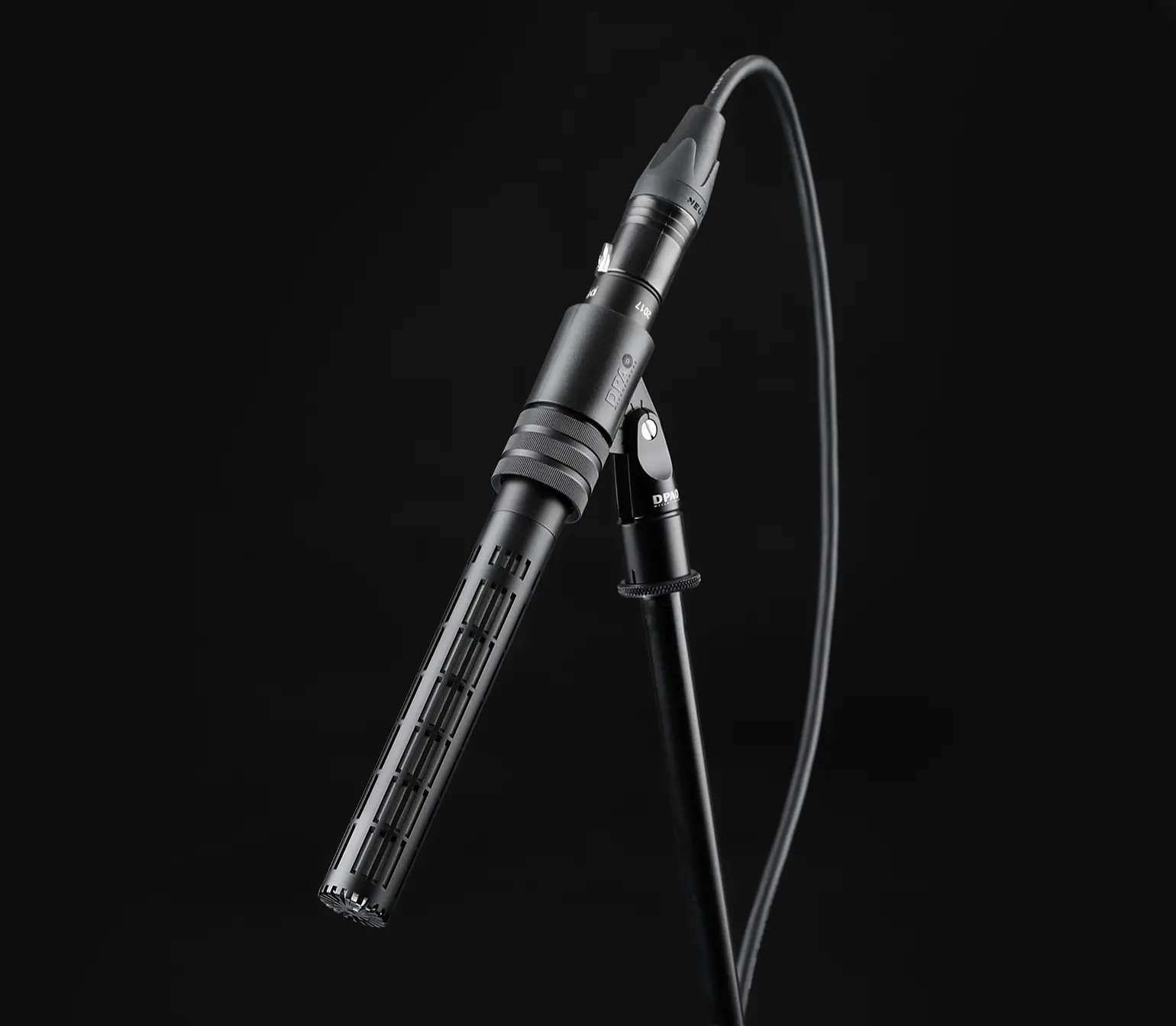
Excellent off-axis rejection
2017, like all DPA directional microphones, has outstanding off-axis performance. The expertly designed interference tube technology ensures that all off-axis input is highly attenuated. This means that the 2017 offers comparable directionality to comparable mics on the market, but due to the well-designed construction, the off-axis pickup is much more balanced and uniform. This gives you a balanced compromise between natural off-axis sound and maximum off-axis rejection.
Low self noise
With extreme SPL (sound pressure level) handling of 143 dB SPL peak, low self-noise of 13 dB(A), and a dynamic range of 130 dB, the 2017 excels where other good shotgun microphones fail, making it useful in applications where shotguns traditionally do not perform well. Low self-noise is useful when you need to capture/amplify quiet sources or when many microphones are open at the same time.
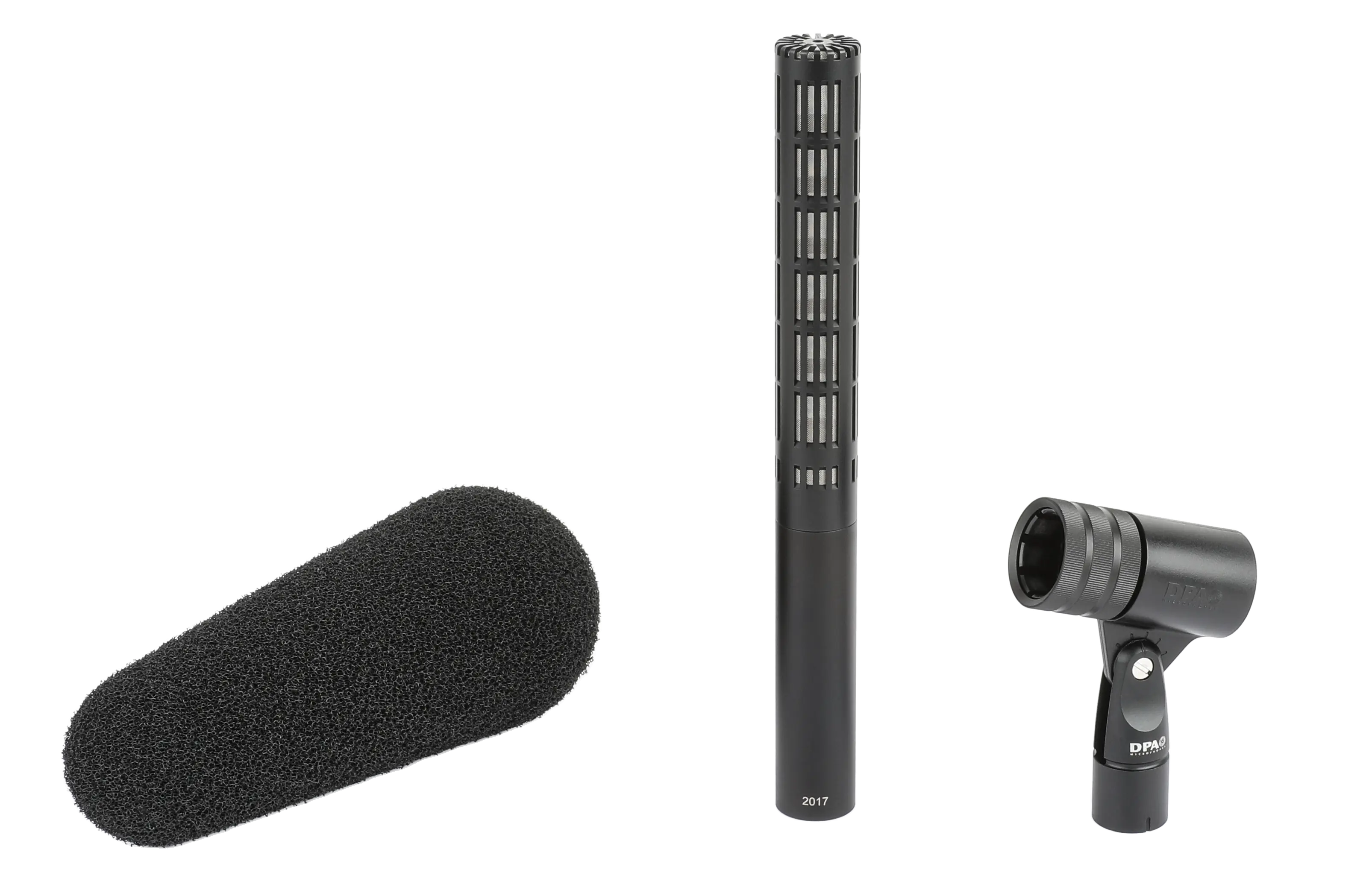
Rigorously tested for performance in the toughest environments
2017 has withstood DPA test protocols that evaluate its physical ruggedness, specifically with regard to mechanical shock and resistance to moisture and condensation. Several tests have been conducted to confirm that the microphone's functionality is not affected by repeatedly rolling it off shelves or tipping it on a mic stand onto a hardwood floor, right up to the tip of the microphone.
In addition, the microphone survives exposure to direct rain showers and dries quickly to return to perfect operation faster than many other shotguns on the market. Tests have shown that the 2017 can consistently and easily withstand and recover from condensation phenomena on par with the most rugged shotgun mics on the market.
Easy to set up, easy to position and easy to use
2017 is shorter, lighter and easier to use than competing microphones. Its smaller size allows it to fit into smaller windscreens, and because there are no buttons to press, you can put it in its enclosure and forget about it.
In addition, the carefully designed interference tube, combined with the uniform 360° pattern, ensures consistent results even when the actual microphone is rotated around the central axis. Other shotgun microphones with a less uniform pattern suffer from sound color shifts when the microphone is unintentionally rotated.
Comparing 2017 and 4017
2017
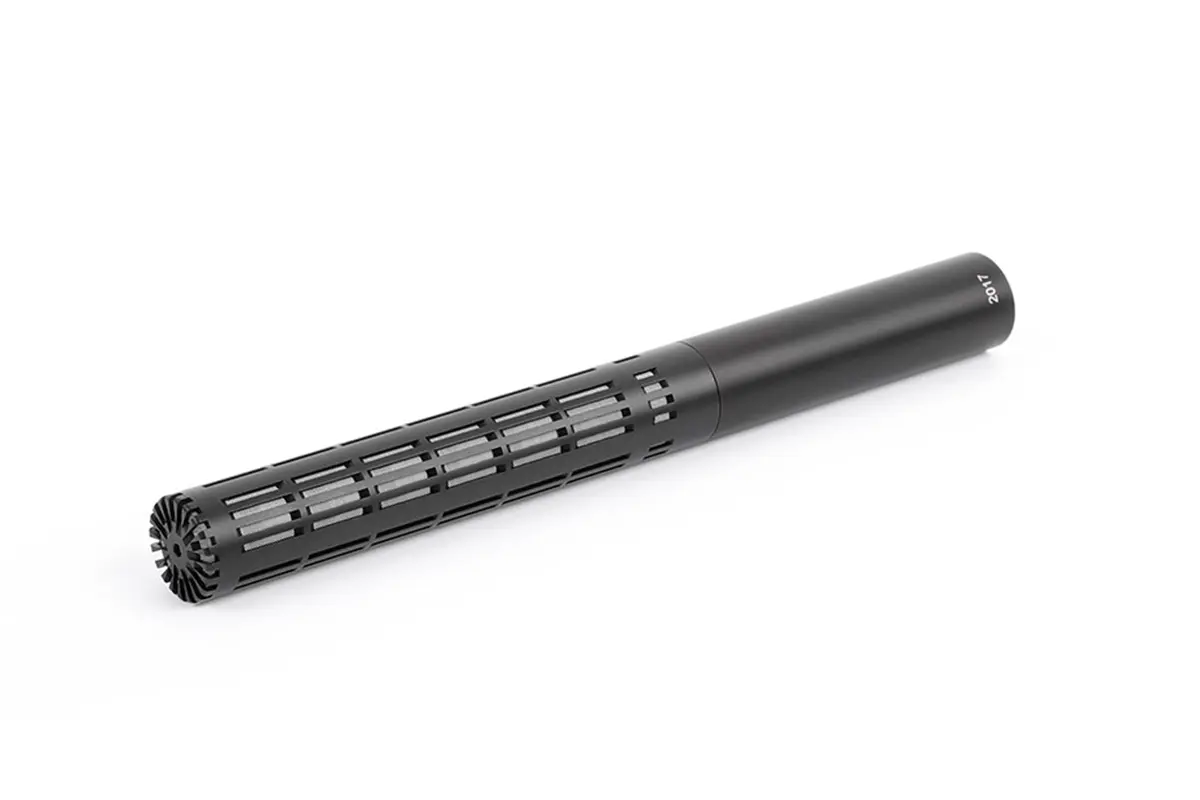
4017
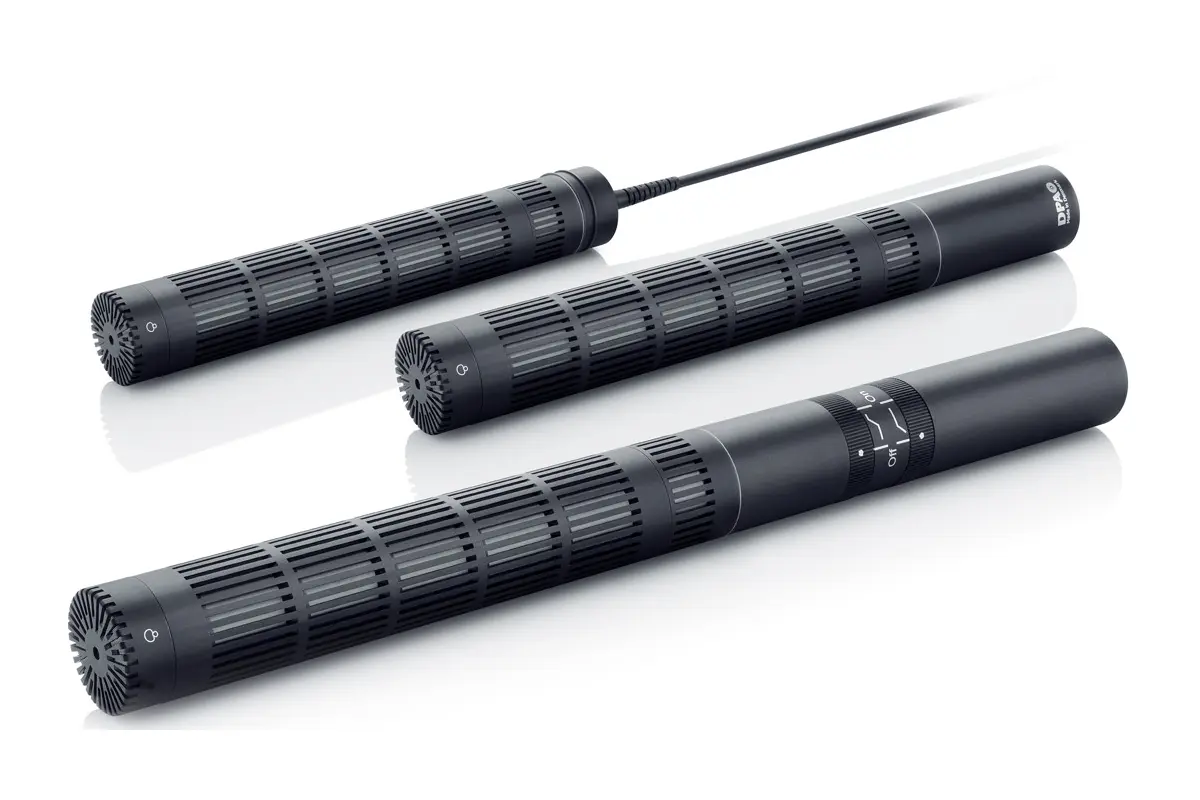
Rigorously tested for performance in the toughest environments
2017 has withstood DPA test protocols that evaluate its physical ruggedness, specifically with regard to mechanical shock and resistance to moisture and condensation. Several tests have been conducted to confirm that the microphone's functionality is not affected by repeatedly rolling it off shelves or tipping it on a mic stand onto a hardwood floor, right up to the tip of the microphone.
In addition, the microphone survives exposure to direct rain showers and dries quickly to return to perfect operation faster than many other shotguns on the market. Tests have shown that the 2017 can consistently and easily withstand and recover from condensation phenomena on par with the most rugged shotgun mics on the market.
Easy to set up, easy to position and easy to use
2017 is shorter, lighter and easier to use than competing microphones. Its smaller size allows it to fit into smaller windscreens, and because there are no buttons to press, you can put it in its enclosure and forget about it.
In addition, the carefully designed interference tube, combined with the uniform 360° pattern, ensures consistent results even when the actual microphone is rotated around the central axis. Other shotgun microphones with a less uniform pattern suffer from sound color shifts when the microphone is unintentionally rotated.
Both the 2017 and the 4017 are high-quality, professional shotgun microphones. Nevertheless, there are differences between the two microphones. To help you choose the right microphone, here is a brief overview of the most important features.
Frequency response
The 2017 has a similar frequency response to the 4017C, but the 2017's low-cut filter at 60 Hz allows the low frequencies to decay earlier than the 4017C. Using the 4017 with the MMP-B preamplifier, which has a built-in cut at 50 Hz and a switchable first-order cut at 120 Hz, offers more possibilities.
Sensitivity
The 2017 has a slightly higher sensitivity than the 4017 (with both the MMP-B and MMP-C preamplifiers) to keep the microphone's self-noise as low as can be expected from a microphone in this class.
Acoustic performance
The sound character of the 2017 is very similar to that of the 4017. Although the amplifier and capsule designs are different, the 2017 still has the well-known DPA sound clarity.
Mechanical resistance
The housing of the 2017 model is thicker than that of the 4017 model, which makes it more resistant to mechanical impact, but also heavier. If a lightweight shotgun microphone is required, e.g. on a boom, the 4017 is the right choice.
Modularity
The 2017 has a fixed capsule that cannot be removed. In contrast, the 4017 has a modular design so that the preamplifier can be replaced.
| 2017 | 4017B | |
| Cable drive capability | 100 m (328 ft) | 100 m (328 ft) |
| Capsule diameter | 17 mm (0.67 in) | 19 mm (0.75 in) |
| Capsule type | Pre-polarized condenser capsule | Pre-polarized condenser capsule |
| Color | Black | Matt black |
| Common mode rejection (CMRR) | > 60 dB | > 40 dB |
| Connection | XLR-3M. Pin 1: shield, Pin 2: signal + phase, Pin 3: - phase | XLR-3M. Pin 1: shield, Pin 2: signal + phase, Pin 3: signal - phase |
| Power consumption | 1.8 mA | 4.5 mA |
| Directional pattern | Supercardioid @ 1 kHz | Supercardioid, lobe-shaped |
| Distortion, THD < 1% | 140 dB SPL (143 dB SPL peak) | 134 dB SPL RMS, 137 dB SPL peak |
| Dynamic range | Typ. 130 dB | Typ. 124 dB |
| Effective frequency range, ±2 dB, at 60 cm (23.6 in) | 70 Hz to 18 kHz with typ. 2 dB soft boost @ 15 kHz | 70 Hz - 18 kHz with typ. 3 dB soft boost @ 15 kHz |
| Equivalent noise level, A-weighted | Typ. 13 dB(A) re. 20 µPa (max. 15 dB(A)) | Typ. 13 dB(A) re. 20 µPa (max. 15 dB(A)) |
| Equivalent noise level, ITU-R BS.468-4 | Typ. 24 dB (max. 26 dB) | |
| Frequency response | 20 Hz - 20 kHz | 20 Hz - 20 kHz, permanent third-order high-pass filter @ 50 Hz |
| Max. SPL, THD 10% | 145 dB SPL (148 dB SPL peak) | 138 dB SPL peak |
| Maximum output voltage, RMS | 8.7 V (21 dBu) | 2.0 V |
| Microphone diameter | 19 mm (0.75 in) | 19 mm (0.75 in) |
| Microphone length | 184 mm (7.2 in) | 212 mm (8.3 in) |
| Minimum load impedance | 2 kΩ | 2 kΩ |
| Output balance principle | Impedance compensation with Active Drive | Signal balanced |
| Polarity | +V an Pin 2 for positive sound pressure | +V an Pin 2 for positive sound pressure |
| Power supply (for optimum performance) | P48 (Phantom Power) | P48 (Phantom Power) |
| Principle of operation | Pressure gradient, with interference tube | Pressure gradient, with interference tube |
| Nominal output impedance | 60 Ω | 100 Ω |
| Relative humidity (RH) | Up to 90 % | Up to 90% |
| Sensitivity, nominal, ±2 dB at 1 kHz | 25 mV/Pa (± 2 dB ) | 19 mV/Pa; -34.4 dB re. 1 V/Pa |
| Switchable attenuator, filter etc. | High boost: +4 dB at 8 kHz. Low Cut: First order filter @ 120 Hz | |
| Temperature range | -40°C to 45°C (-40°F to 113°F) | -40°C to 45°C (-40°F to 113°F) |
| Weight | 115 g | 75g (2.65 oz) |




